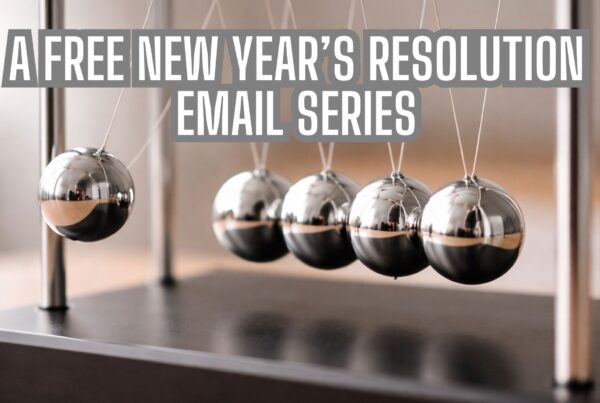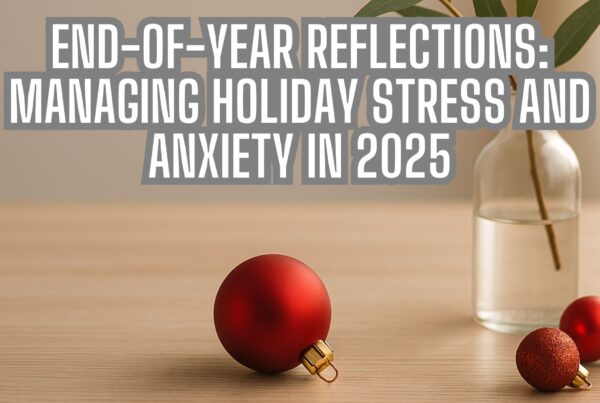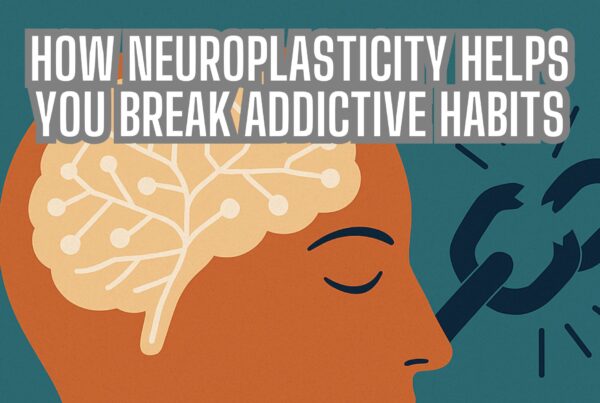How to Achieve Your New Year’s Resolutions – Getting Ready for Jan 1st
New Year’s Resolutions – Getting Ready for Jan 1st
If you’re getting ready to take on a new year, it isn’t uncommon to consider what changes you will make. Many people consider what New Year’s Resolutions they’re prepared to explore. Being prepared for the new year will always give you the best chances for success.
This is part one of a two-part series. Check out part two for tips after January 1st.
Maybe the year has been a little unkind to you and, as a result, you’ve discovered some unhelpful ‘coping strategy’, such as over-eating, smoking, drinking, gaining weight or even a little too much ‘partying’.
Perhaps the pace of the year and the circumstances it provided has left you feeling a little stressed, anxious and uneasy.
It would seem likely that your new year’s resolutions are going to focus on what you feel is out of line with who you want to really be. Such as, “I’m going to quit smoking”, or “I’m going to lose that weight”, or “I’m going to get myself to the gym more”, or even simply “I’m going to not stress as much.”
New Year’s Resolutions Success Rate
According to Statistic Brain, up to 62% of American’s will potentially make a New Year’s Resolution this year however only 8% will successfully achieve it. Only 8%!
These statistics are not unrealistic though. Frequent studies have shown that change is generally made more achievable when people turn to outside resources for support during that time.
Year upon year, people promise to make changes to themselves and then, year upon year, they do exactly the same thing which results in limited success. Statistically, most resolutions struggle to last past the initial weeks.
Leading up to New Year’s this year, Release Hypnosis has written up some tips and suggestions to help make this year different for you and to help you get greater success with the changes you want to make.
Pick Only One Thing
While many of us will tend to only pick one new year’s resolution to focus on, some people get caught up in trying to change everything all at once. You’ll ask them what they want to change and get a response like, “Well, I need to eat less, exercise more, not stress as much and lose some weight. Oh, and I should probably give up smoking too.”
Why not just change careers and get a new partner while you’re at it?
With that much change going on, you’re likely to experience overwhelm and even if you wanted that change, you may find that it becomes all ‘too hard’.
The answer is simple; focus on one thing at one time.
Some of these will overlap; eating less and exercising more will result in losing weight. However, you will also lose weight just from eating less or just from exercising more (providing you don’t eat more or exercise less than what you had previously!). Choose one focus and really take a moment to sit and imagine what that would look like for you.
Frame It Positively
Let’s not talk about ‘losing weight’. People generally tend to go searching for what they lose. I actually like to refer to it as ‘weight management’.
However, let’s really frame it in the positive to help you connect with what it is you want to achieve; you want to ‘feel lighter’.
You want to ‘feel more active and alert’ if you’re exercising more.
You want to ‘be able to breathe easier’ if you give up smoking.
Can you even feel the ‘yes!’ inside your body when you talk about ‘feeling lighter’, ‘being more active and alert’ and ‘being able to breathe easier’ overeating less, exercising more and quitting smoking?
When you talk in the positive, your mind can’t help but imagine what you’re talking about. The focus becomes on the benefit of what you’re wanting to achieve and not on what it is that you’re losing.
Have a Plan for Your New Year’s Resolutions
‘If you fail to plan, you plan to fail’, at least that’s what the old business saying says.
However, it is true.
If you don’t have a plan about how you’re going to achieve your resolution, then you’re leaving it all to chance.
It doesn’t have to be as detailed and complex as a business plan with Gant charts and ROI; but it does need to be about what you are going to do to achieve your results; when, where, how and most importantly WHY. Why are you doing this? What do you want to achieve this for? Who do you want to achieve this for? What are the benefits of achieving this?
Consider what hurdles you’ll experience along the way. What will you do to avoid them? Or jump over them? Or go around them?
What will you need to achieve your resolution? Does it involve researching? Or a membership to a club or resource? How important is it to you really in order to make the changes that you want to make?
What if you don’t know? What if you’re unsure about why you want to make this change? In Gestalt therapy, there is the belief that discomfort and incongruence will occur when there is a gap between the ‘ideal self’ and the ‘real self’. Is this coming into play for you? Do you feel that you want to change but you’re unsure about why or the real motivation?
Small Steps Work Best
When making your plan, don’t go for giant leaps and strides. These will simply end up becoming too hard, too difficult, too much work and you’ll most likely give up. However, when you start to make small steps, it becomes so much more achievable.
It just needs to be one small step different. Just do one thing differently to begin with. Do it for a week. See how it feels. Does it work? If not, do something different again.
Einstein once famously said that the definition of insanity was ‘doing the same thing over and over again and expecting a different result.’ Why repeat behaviours that are leading you to this dissatisfaction? What have you done to yourself to deserve this?
How do you know if it is realistic? Scale it!
For example, say you decide that your ‘one thing different’ is to go for a walk three times a week after work.
After that, ask yourself (honestly) on a scale of 1 to 10, with 1 being not at all and 10 being done, how likely are you to achieve this task.
If you (honestly) respond with anything less than an 8, you need to review the task. You might’ve come in with a 6, so ask yourself what you would need to do to get that 6 to a 7 (or an 8).
If you find that the task just came in at a 5 or lower, then you really need to go back to square one and explore WHY this change is IMPORTANT to YOU.
Make It Visual and Share With the World
We respond to visual cues, so you might want to consider creating a mood board that you’ll see every day with pictures that are going to connect you to the ‘why’ for your change.
Put up pictures of you being fitter and thinner. Or pictures of who you’re doing this for; your parents or your partner or your children. Images of what you will achieve out of it; being more comfortable, more happy, more content.
Let people know what you’re doing. Share your journey. It will inspire others and it will make you accountable for your own change. You can lead the revolution to prove that change is possible when you’re ready to make that change and you’re engaged with it in a meaningful way.
These points are all going to help you leading up to December 31st and to achieve your New Year’s Resolutions.
Next time, we’ll explore what happens once January 1st hits to help you keep connected with the goal, stay on track and enjoy the benefits of change.
Book Your FREE Half Hour Discovery Consultation With Release Hypnosis NOW!
You may also like to read:
Top Tips For Your Mental Wellbeing This Christmas/a>
Your Own Personal Hypnosis Recording
Release Hypnosis’s Lawrence Akers on JOY FM
Breaking Addiction Through Counselling and Hypnosis








